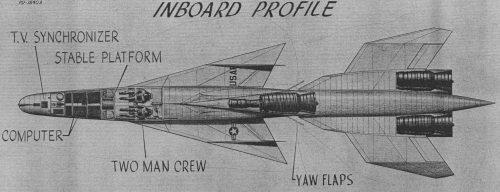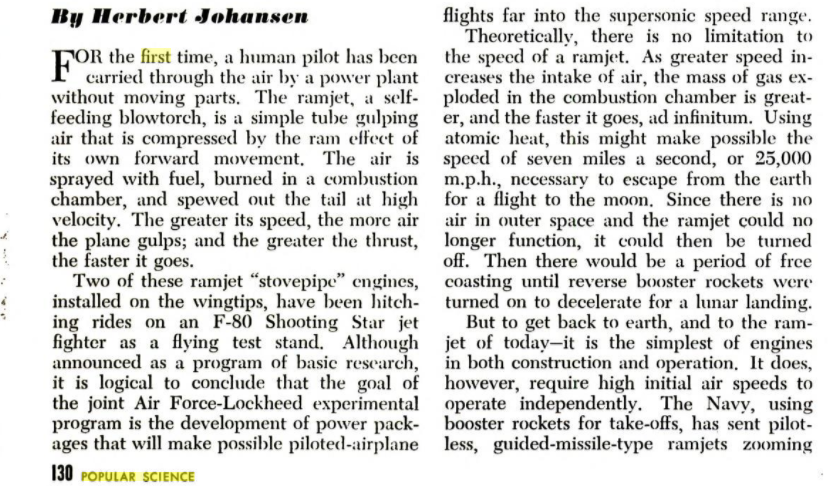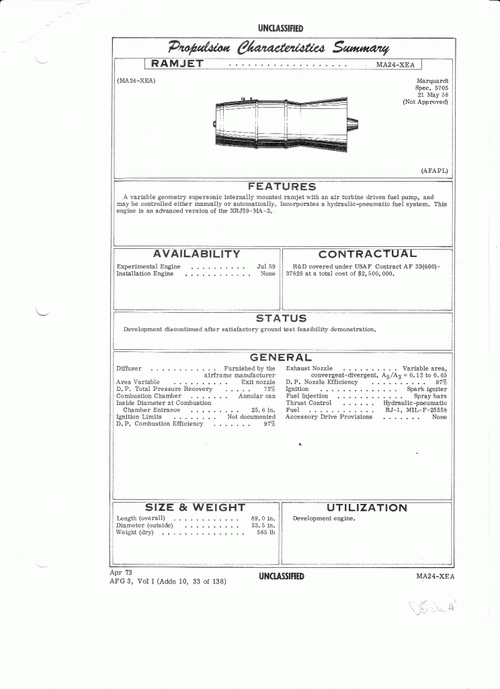Configuration 121 Report
A highly detailed system description was prepared by Convair at this point in the configuration evolution. Dated 3 March 1958, the report consisted of seven large individually bound volumes: a summary of the weapon system; design features and structure; aerodynamics; stability and control; navigation, weapon delivery, reconnaissance, and decoy; propulsion and thermodynamics; and operation and ground support.
The introduction listed six design requirements for the aircraft: Mach 4 to 6 cruise capability; 5,000 nautical mile operating radius; 1961–1963 operational time frame; Class C warhead delivery (weapon load for the aircraft was listed as 3,400 pounds); two-man, side-by-side crew; and minimum size to fit the B-58 and to allow mobile launching and economy of production.
The manned stage was forty-seven feet long with a D-shaped cross section forty-five inches high and sixty-four inches wide. The gross weight for the manned stage was 20,190 pounds. The aircraft weighed 9,120 pounds empty.
The two-person crew sat side by side. The forward section of the manned stage contained an electronics bay and a nose gear. The forward section also contained a movable nose used for trim. The nose could be retracted when it was on the B-58. The aft fuselage of the manned section contained an equipment bay, fuel tank, ramjet engine, turbojet engine, and landing skids. The GE J85 turbojet engine, used for landing, was installed in the lower aft section ahead of the Marquardt MA24F ramjet engine. Fuel could be transferred between stages for balancing the aircraft in flight.
The manned stage retained the twenty-degree pivoting nose for landing. The hydraulic actuator lowered the forward section for approaches and landings. The actuator also functioned as shock absorber for landings.
The two-man crew consisted of a pilot and a bombardier/navigator. The crew stations had dual flight controls. Seating position was reclined forty-five degrees to minimize the height of the compartment. The glass portion of the cockpit enclosure was shielded with metal covers during high-speed flight. Indirect vision was provided by a closed circuit television system.
The expendable stage was almost forty-nine feet long with a maximum diameter of forty-six inches. Gross weight for the expendable stage was 25,700 pounds. Empty weight was 7,400 pounds.
The forward section of the expendable stage contained a fuel tank and a warhead bay with stabilizing skirts that would be opened when the warhead was released from the rest of the expendable section. The aft section contained another fuel tank, a top-mounted wing, and two Marquardt MA24F ramjet engines snuggled beneath the wing adjacent to the body.







